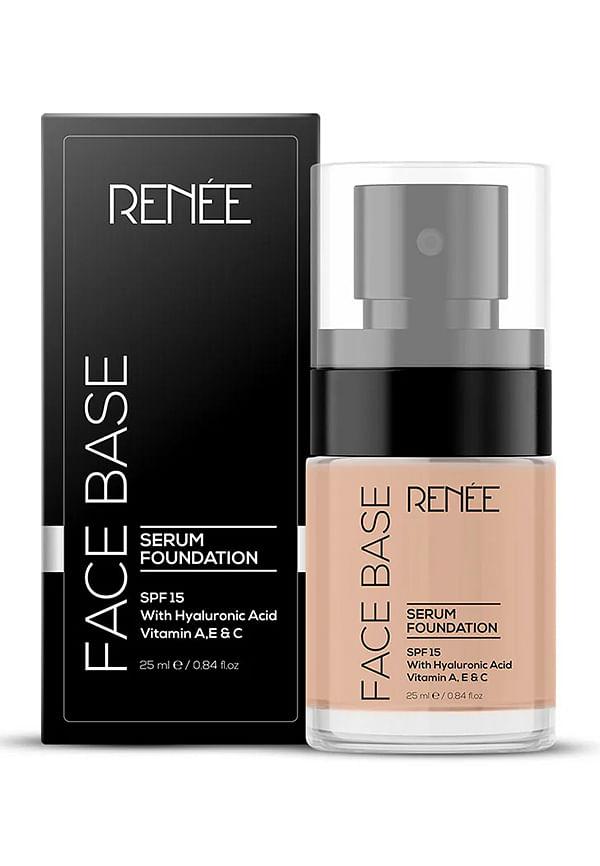8 Proven Tips for Mastering the Art of Face Serum Application


Getting your face serum routine right can feel like cracking a secret code, but here's the thing—it's way simpler than you think. Face serums are basically the concentrated powerhouse of your skincare game, packed with active ingredients that target specific skin concerns. Whether you're dealing with dullness, fine lines, or breakouts, knowing how to use face serum properly can make all the difference between "meh" results and that glow-up you've been after. The trick isn't just slapping it on and hoping for the best—it's about technique, timing, and choosing what works for your skin type. Let's break down the eight game-changing tips that'll help you master face serum application like a proper skincare enthusiast.
Face serums are lightweight, fast-absorbing liquids designed to deliver high concentrations of active ingredients directly to your skin. Think of them as the targeted treatment step in your skincare routine—they're formulated to penetrate deeper than moisturisers and work on specific concerns. The face serum benefits are pretty impressive when you get the application right. These concentrated formulas can help with everything from boosting hydration and brightening skin tone to reducing fine lines and controlling oil production. What makes them so effective is their molecular structure—the smaller molecules can slip past your skin's surface and get to work where they're needed most.
Most serums contain powerhouse ingredients like vitamin C for brightening, hyaluronic acid for hydration, niacinamide for oil control, and retinol for anti-ageing. Each ingredient targets different skin concerns, which is why choosing the right serum for your specific needs matters so much.
 200ml
200mlKorean Rice Water & Collagen Advanced Damage Repair Conditioner
Picking the right serum isn't about going for the trendiest option—it's about understanding what your skin actually needs. Your skin type and main concerns should guide your choice, not just what's popular on social media. If you're dealing with oily or combination skin, look for face serum for oily skin that contains niacinamide or salicylic acid. These ingredients help control excess oil production and minimise the appearance of pores without stripping your skin.
Dry skin types should focus on hydrating serums with hyaluronic acid, glycerin, or ceramides. These ingredients help your skin hold onto moisture and create a plumper, more comfortable feel.
 Combo
ComboFresh Face & Floral Mist Kit: Eau De Parfum Bloom + Pore Minimizing Sunscreen SPF 70 PA++++ Face Gel
For those concerned about fine lines and loss of firmness, face serum for anti-aging typically contains retinol, peptides, or vitamin C. These ingredients support collagen production and help improve skin texture over time.
Want that lit-from-within glow? Face serum for glowing skin usually features vitamin C, alpha hydroxy acids, or botanical extracts that help brighten and even out skin tone.
Now for the main event—these eight face serum application tips will help you get the most out of your chosen formula. Getting the technique right can literally double the effectiveness of your serum.
 30 ml
30 mlBrightening & Whitening Face Serum
Always apply serum to freshly cleansed skin. Any leftover makeup, sunscreen, or daily grime creates a barrier that prevents your serum from penetrating properly. Follow up with a gentle toner if that's part of your routine.
Here's a game-changer most people miss—applying serum to slightly damp skin helps with absorption and prevents that tight feeling some active ingredients can cause. Pat your face dry but leave it just a touch moist.
 20 Ml
20 MlFace base Serum Foundation
A pea-sized amount is usually plenty for your entire face. More isn't always better with serums—using too much can actually irritate your skin or prevent proper absorption.
Gentle patting motions work better than rubbing when you're learning how to apply face serum. Use your fingertips to pat the serum into your skin, then gently press your palms against your face to help it sink in.
While you should apply serum to your entire face, spend extra time patting it into areas where you have specific concerns—like around your eyes for fine lines or on your T-zone for oil control.
 30 ml
30 mlSerum Foundation
Give your serum about 30 seconds to a minute to absorb before applying moisturiser. This waiting time ensures the active ingredients have started penetrating your skin rather than just sitting on the surface.
If you're using multiple serums, apply them from thinnest to thickest consistency. Water-based serums go first, followed by oil-based ones. Always wait between applications.
 30 ml
30 mlCocoa Ultra Hydrating Face Serum
Consistency beats intensity every time. It's better to use your serum regularly as part of your face serum routine than to use it sporadically, even if you're applying it perfectly.
Timing matters just as much as technique when it comes to how to use face serum effectively. Most serums can be used morning and night, but some ingredients work better at specific times. Morning application works well for vitamin C serums and hydrating formulas. These help protect your skin throughout the day and create a smooth base for makeup. Evening is ideal for retinol-based serums and stronger active ingredients that can make your skin more sensitive to sunlight.
Your serum should slot into your routine after cleansing and toning but before moisturiser and sunscreen. Start slowly if you're new to serums—maybe every other night to begin with, then build up to daily use as your skin adjusts.
 30 ml*2
30 ml*2Firming and Toning Serum for Women
Getting the most out of your serum isn't just about application—storage and timing play huge roles too. Keep your serums in a cool, dark place to preserve the active ingredients, especially vitamin C serums which can oxidise quickly. When combining serums with other skincare products, avoid mixing certain ingredients that can cancel each other out or cause irritation. For example, don't use retinol and vitamin C together, and be careful mixing acids with other active ingredients.
Most serums last 6-12 months once opened, but check the packaging for specific guidance. If your serum changes colour, develops a strange smell, or starts to separate, it's time to replace it.
 1 Unit
1 UnitUnderarm Depigmentation Serum
Even with the best intentions, it's easy to make mistakes that reduce your serum's effectiveness. Using too much product is probably the most common error—more doesn't equal better results and can actually irritate your skin. Applying serum in the wrong order is another frequent mistake. Remember the golden rule: thinnest to thickest consistency. Your serum should go on before heavier creams and oils but after water-based toners.
Not giving your serum enough time to work is perhaps the biggest mistake of all. Most serums need 4-6 weeks of consistent use before you'll see noticeable results, so don't give up after a week. This is where discovering the right serum becomes crucial, and platforms like Smytten make this journey so much easier. As India's largest product discovery and trial platform, Smytten connects you with over 1,500 trusted skincare brands, letting you try different serums before committing to full-size purchases. With trial packs available for just ₹249 and 100% cashback redeemable for future orders, you can experiment with various formulas to find your perfect match without the financial risk.
 30 ml
30 ml2% Alpha Arbutin & Hyaluronic Acid Face Serum
Start with clean, slightly damp skin. Use a pea-sized amount and gently pat the serum into your face using your fingertips. Focus on problem areas and wait about a minute before applying moisturiser.
Most serums can be used daily, but start slowly if you're new to active ingredients. Some serums like retinol might need to be introduced gradually, beginning with every other night.
Apply serum after cleansing and toning but before moisturiser. You can use most serums morning and night, though some ingredients like retinol work best in the evening.
 100 ml
100 mlBotanical Gel Cleaner
Yes, serums are designed to be left on your skin. In fact, overnight is when many active ingredients do their best work as your skin repairs itself during sleep.
Vitamin C serums work best in the morning. Apply to clean skin, wait for absorption, then follow with moisturiser and sunscreen. Start with lower concentrations if you're new to vitamin C.
Wait about 30 seconds to a minute for the serum to absorb, then apply your moisturiser. In the morning, finish with sunscreen as your final step.
Mastering how to use face serum properly isn't rocket science, but it does require patience and the right technique. Remember that consistency trumps perfection—it's better to apply your serum regularly with decent technique than to nail the perfect application once in a while. The key takeaways are simple: start with clean skin, use the right amount, pat don't rub, and give it time to work. Most importantly, choose a serum that matches your skin type and concerns rather than just following trends. With Smytten's trial platform covering everything from hydrating hyaluronic acid serums to brightening vitamin C formulas, you can discover what works for your unique skin without the guesswork. After all, why settle for maybe when you can try different options and find the one that gives you that glow-up you're after? Your skin deserves products that actually work for it, not against it.